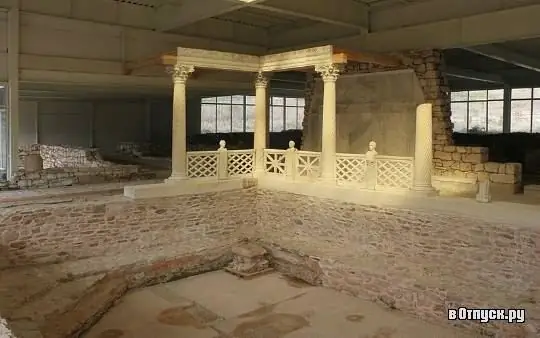
Description of the attraction
Villa Armira is a landmark that should be seen after visiting Bulgaria, according to UNESCO. This lavishly decorated palace is located among the mountains of the Eastern Rhodopes. 4 km to the south-west is the city of Ivaylovgrad, practically on the border with Greece. The name of the villa was given by the nearby river Armira, which is a tributary of the Arda. This architectural monument was discovered around 1960.
The villa was built in the 1st century AD, inhabited until the end of the 4th century and was abandoned around 378. This is the only villa from the Roman period that has been perfectly preserved to this day in Bulgaria. In addition, it is also the only villa that has survived within the Balkan provinces that once belonged to the Romans. The villa was found to have been inhabited for at least 300 years.
It is known that the first owner of the villa is none other than the heir to the king of Thrace, who was granted Roman citizenship for his cooperation with Rome. It was the Roman authorities who gave the go-ahead for the construction of a luxurious two-storey villa, which was erected in the so-called "golden age" of classical antiquity. After serving for about three centuries, it was subsequently plundered by the Goths and then fell into disrepair.
The project of the villa resembles the letter U, the total area is 3600 sq.m. In the center of the complex was the impluvium - a pool that was filled with rainwater. The villa was surrounded by a picturesque garden. 22 rooms on the ground floor, including a banquet hall, the owner's reception, bedrooms and other rooms, as well as a sauna and Roman bath. The second floor was occupied by rooms for women, children and servants, storerooms and other utility rooms. Part of the building was heated as it was noticeably cold in the mountains in winter. The remains of a hypocaust - an ancient heating system - have been fragmentarily preserved to this day. The villa is especially prized for its rich and well-preserved antique mosaics. They combine not only Roman but also Greek and Thracian elements. It should be noted the image-imitation of a double ax - the key symbol of the power of the Thracians.
According to the Regional Development program, European funds are planning to allocate more than 800 thousand euros for the restoration of the unique building.






